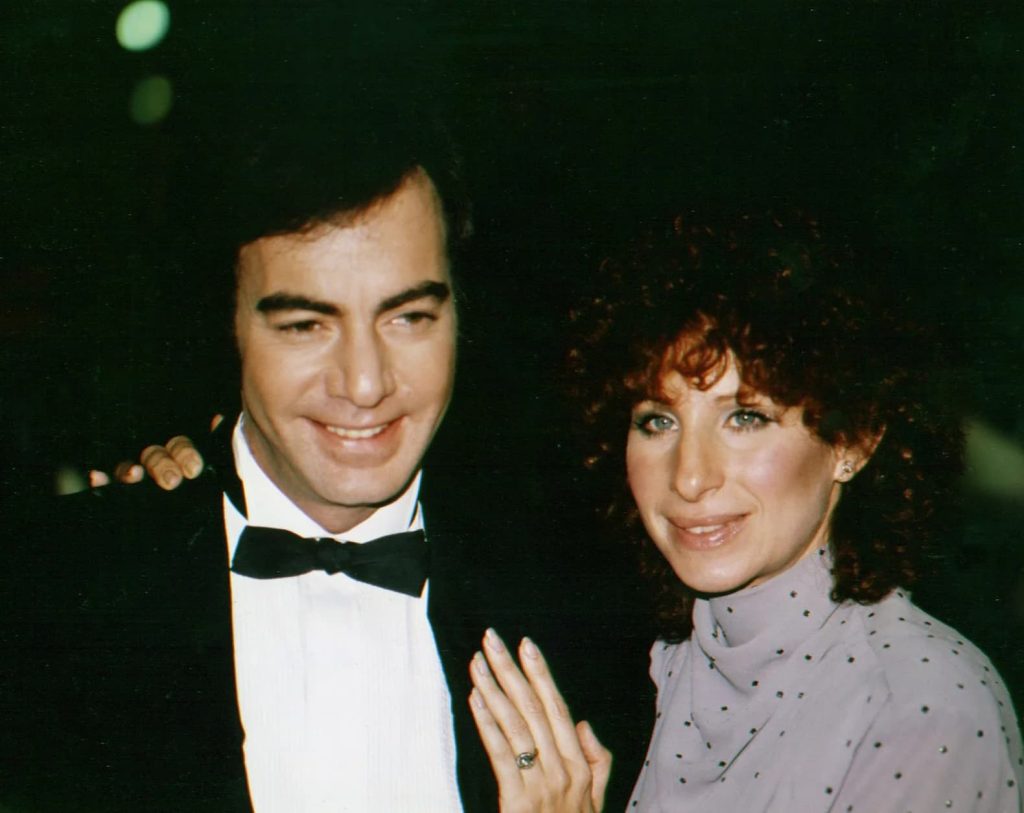
A Timeless Duet: The Fragile Beauty of “You Don’t Bring Me Flowers”
“You Don’t Bring Me Flowers,” a poignant ballad about lost romance and unspoken resentments, soared to the top of the Billboard Hot 100 in 1978, becoming a chart-topping hit for Barbra Streisand and Neil Diamond. Originally conceived as separate solo pieces, the song’s serendipitous fusion into a duet created a powerful narrative that resonated deeply with audiences, capturing the bittersweet ache of fading love with an almost heartbreaking intimacy.
The story behind “You Don’t Bring Me Flowers” is as fascinating as the song itself. Neil Diamond initially wrote and recorded the song for his 1978 album, “I’m Glad You’re Here With Me Tonight.” Simultaneously, Barbra Streisand, unaware of Diamond’s version, was working on her own rendition for her album, “Songbird.” It was legendary radio programmer Jack Thistlewaite who, upon noticing the thematic similarities and the shared melancholic beauty of both versions, ingeniously spliced the two recordings together, creating a “duet” that he then aired on his show. The overwhelming listener response prompted Streisand and Diamond to re-record the song properly as a duet, solidifying its place in music history. This accidental genesis adds a layer of magic to the already emotionally charged song, as if fate itself had intended these two iconic voices to intertwine.
The song’s lyrics paint a vivid picture of a relationship slowly crumbling under the weight of neglect and unspoken words. It’s a familiar story, one that many couples can relate to – the slow drift from passionate romance to comfortable, yet ultimately unsatisfying, routine. The “flowers” of the title serve as a potent metaphor for the small gestures of love and affection that often wither and die in long-term relationships. “You don’t bring me flowers anymore,” Streisand and Diamond lament, their voices blending in a harmonious lament, “You used to bring me flowers.” This simple line speaks volumes, encapsulating the loss of romance, the fading of the initial spark, and the quiet desperation of two people who are growing apart.
Beyond the literal meaning, “You Don’t Bring Me Flowers” delves into the unspoken resentments that can fester beneath the surface of a relationship. It’s not just about the flowers; it’s about what they represent: the thought, the effort, the continued expression of love. The song captures the subtle ways in which couples can drift apart, not through grand gestures of betrayal, but through the accumulation of small neglects, the unspoken words, and the fading attention. It’s a song about the quiet heartbreak of realizing that the romance has gone, leaving behind a hollow echo of what once was.
The power of “You Don’t Bring Me Flowers” lies not only in its relatable lyrics but also in the exceptional vocal performances of Streisand and Diamond. Their voices, both powerful and nuanced, intertwine beautifully, conveying the vulnerability and pain of the characters they portray. Streisand’s soaring vocals capture the feminine perspective, the yearning for romance and the sting of disappointment, while Diamond’s rich baritone embodies the masculine side, perhaps less expressive but equally affected by the emotional distance. Together, their voices create a powerful and moving dialogue, a conversation between two people who are struggling to communicate their needs and desires.
For those of us who remember the late 70s, the strains of “You Don’t Bring Me Flowers” evoke a powerful wave of nostalgia. It was a time of big hair, disco music, and the rise of the singer-songwriter. This song, however, stood apart from the disco craze, offering a more introspective and emotional experience. It was a song that you could slow dance to, a song that you could cry to, a song that you could relate to. It was a song that spoke to the complexities of love and relationships, a song that reminded us that even the most passionate romances can fade if they are not nurtured.
The enduring popularity of “You Don’t Bring Me Flowers” is a testament to its timeless themes and its powerful performances. It remains a classic ballad, a reminder of the fragility of love and the importance of cherishing the small moments that make a relationship special. It’s a song that continues to resonate with audiences of all ages, a poignant reminder that even though time may pass and circumstances may change, the need for love, affection, and connection remains a constant in the human heart.